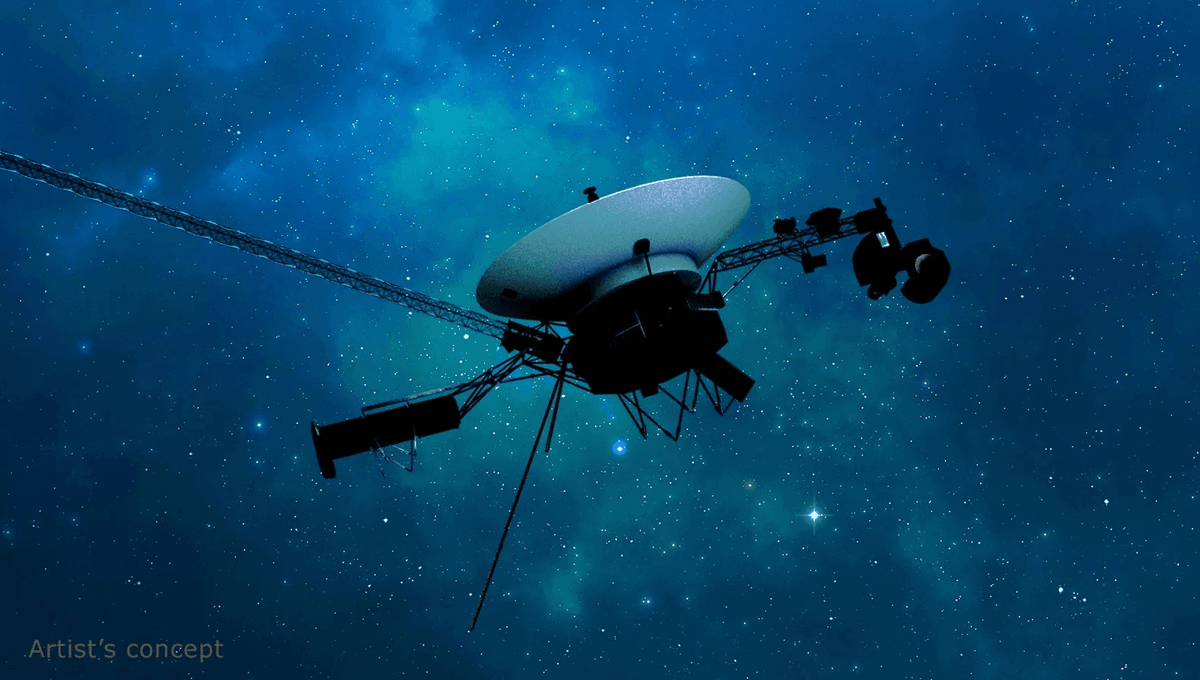
Voyager 1 is the furthest any human object has ever gone from Earth. It is now over 24 billion kilometers (15 billion miles) from our planet, flying through interstellar space. Since its launch in August 1977, the spacecraft has remained in contact with Earth, but over the last several months, that communication has become non-sensical. Are we about to lose the second-longest operating spacecraft in human history? We spoke to NASA to find out.
NASA has been monitoring the issue since September when Voyager first started glitching. Speaking to the Voyager team about the problem and their fixes, they told us that they have a better understanding of what the issue is now, and they hope with that knowledge they can return Voyager 1 to working order.
“In September 2023, an issue arose with the data coming back from Voyager 1. Normally transmitted in binary code, or a series of 0s and 1s representing words, the probe was instead sending only alternating 1s and 0s. Effectively, the call between the spacecraft and the Earth was still connected, but Voyager’s “voice” was replaced with a monotonous dial tone,” the NASA Voyager engineering team explained to IFLScience.
“Because of this issue, scientists are not receiving any science data or updates about the probe’s health and status, including information that might reveal the source of the problem. Through various indirect means, the team has concluded that the issue is most likely with the Flight Data System, one of the probe’s onboard computers. The team is working hard to resolve the issue, but this process may take months.”
The Flight Data System (FDS) configures each instrument of Voyager 1 and controls its operations, as well as collecting all the data the spacecraft is taking in. It also formats them for transmission, so it’s bad that we can’t get it to work. Attempts to solve the glitch have been unsuccessful so far but more complex attempts are expected to take place in the coming weeks.
“The team has attempted various ‘simple’ fixes, such as resetting the FDS to the state it was in before the issue began,” the team told IFLScience.
“This week the team will send more commands to the spacecraft to gather information about the status of the onboard systems. In the coming weeks, the team expects to start making more aggressive attempts to reset various systems that might influence the FDS.”
Despite the weight restrictions when they were launched, the Voyagers had two FDSs each, but Voyager 1’s backup failed in 1981 (luckily after it had passed Saturn). At the time, most people at NASA thought Voyager 1 had done its job, since, unlike Voyager 2, it would not be passing by any further worlds.
Instead, both Voyagers have mapped the heliopause, studied ultraviolet sources far from interference from the Sun, and investigated magnetic fields far from the Sun. Two of Voyager 1’s instruments have failed, and five have been turned off by ground control as “no longer priorities”. Four (one less than Voyager 2) are still operational, or at least were prior to the FDS glitching. The magnetometer and cosmic ray system in particular have proven invaluable in the extended mission. They’re probably still collecting data, but need a functioning FDS to return that information to us.
“There is no backup FDS, so if the team cannot fix this issue, it would likely be the end of operations for Voyager 1. However, Voyager 2 is operating nominally; the Voyager mission will continue as long as one probe is still working,” the Voyager team said.
The situation is serious but the team is not giving up hope, so neither shall we. Best of luck to them as they work out how to get our interstellar traveler back in clear communication with Earth.
Source Link: What’s Going On With Voyager 1? NASA’s Interstellar Spacecraft's Future Looks Uncertain